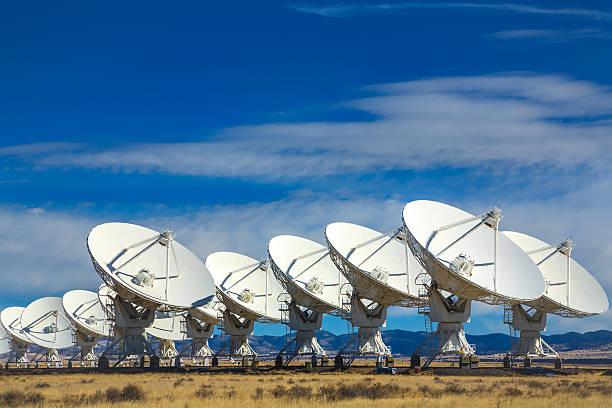In a remarkable advancement in radio astronomy, researchers using the Australian Square Kilometre Array Pathfinder (ASKAP) radio telescope have uncovered a baffling hour-long radio signal from deep space, designated ASKAP J1935+2148. This discovery challenges our current understanding of cosmic phenomena and opens new avenues for scientific exploration.
Discovery and Initial Observations
The ASKAP radio telescope, operated by the Commonwealth Scientific and Industrial Research Organisation (CSIRO) in Australia, detected ASKAP J1935+2148 while monitoring a gamma-ray source. The signal, marked by its unique "circularly polarized" radio waves, was identified by a team of astronomers led by researchers at the International Centre for Radio Astronomy Research (ICRAR). Unlike typical fast radio bursts (FRBs), which last only milliseconds to seconds, this signal persisted for about an hour, a duration previously unseen in similar observations
What is ASKAP J1935+2148?
Nature and Characteristics
ASKAP J1935+2148 stands out due to its unprecedented 53.8-minute periodicity. This long-period radio transient is only the third of its kind ever discovered, with the longest period reported to date. The signal's "circularly polarized" nature indicates that the direction of its radio waves corkscrews as they travel through space, adding another layer of complexity to its analysis.
Possible Origins
The exact source of ASKAP J1935+2148 remains unknown, but two primary candidates have been proposed: neutron stars and white dwarfs. Neutron stars, with their dense cores and rapid rotations, are known for emitting radio waves, but typically not with such long periodicity. White dwarfs, the remnants of stars that have exhausted their nuclear fuel, also exhibit slow rotation periods. However, generating such intense radio signals would be atypical for these objects.
One compelling hypothesis suggests that ASKAP J1935+2148 could be part of a binary system, where a neutron star or white dwarf orbits another unseen star. This scenario could potentially explain the unusual signal characteristics observed.
Implications for Astrophysics
Challenging Existing Models
The discovery of ASKAP J1935+2148 challenges existing astrophysical models and theories about neutron stars and white dwarfs. Current models do not predict such long-period radio emissions from these objects, indicating that there may be gaps in our understanding of their behaviors and properties. This signal could prompt a reevaluation of how these stars emit radio waves and interact with their environments.
Expanding the Search
The identification of ASKAP J1935+2148 suggests that there may be more such long-period radio transients waiting to be discovered. Radio astronomy surveys typically do not search for signals with such extended durations, meaning that many similar objects could be overlooked. Expanding the scope of these surveys could lead to further discoveries and enhance our knowledge of cosmic radio sources.
Future Research and Observations
Continued observations and research are crucial to unraveling the mystery of ASKAP J1935+2148. Future studies will focus on monitoring the source for repeat signals, analyzing its properties in greater detail, and exploring potential binary systems that could explain its origin. Collaborative efforts among international astronomy institutes and the use of advanced telescopes will be essential in these endeavors.
Conclusion
The discovery of ASKAP J1935+2148 by the ASKAP radio telescope team marks a significant milestone in our quest to understand the universe. This mysterious hour-long radio signal not only challenges our current scientific paradigms but also inspires further exploration and discovery in the field of radio astronomy. As researchers delve deeper into the nature of this signal, we can anticipate new insights into the workings of neutron stars, white dwarfs, and the broader cosmos.



















0 Comments